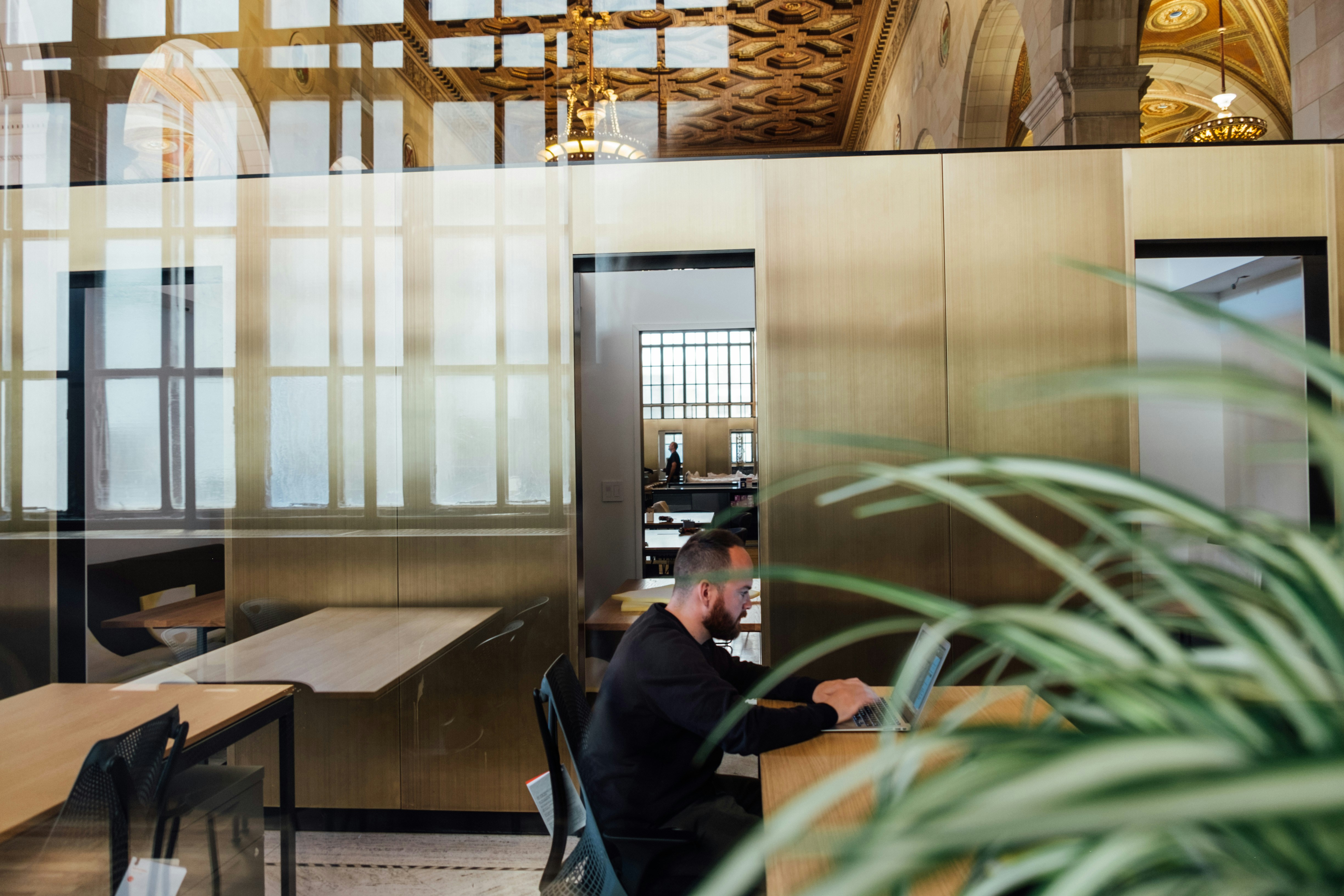
.png)

Are you ready to dive into the future of service design? We are about to explore the latest trends that will leave you inspired, informed, and help you stay ahead of the game while the service economy is thriving and becoming more complicated.
1. Innovation from the inside out
Design agencies are putting in the effort to give their customers a seamless experience, but what about their own teams? This year it’s time to turn the design lens inward and supercharge those internal processes and services. Using a cross-functional, collaborative approach allows you to discover unmet team needs and develop various solutions that deliver multiple perspectives, while making processes faster, more efficient and delightful for your internal stakeholders.
2. User as a co-designer
Gone are the days where customers are passive spectators in the design process. Design teams are now bringing users to the table, lending their unique perspectives and needs to craft services that are not just functional, but also tailored to their needs.
And the cherry on top? This means services are not only better for the user, but also more successful in the long run.
3. Putting people first
Design companies will be further entrenching successful products via additional customer research to ensure service longevity. Through a combination of empathetic design thinking and personalisation, companies are taking a highly customised approach to customer experience design that prioritises the individual needs, emotions and behaviours.
However, our understanding of those needs and behaviours is often hindered by one-dimensionality and bias (e.g when using the outdated method of personas). Thus archetypes and mindsets become the new kids on the block in the world of design, which provide a more insightful and well-rounded view of users and an opportunity for designers to delve into more universal patterns.
As part of this deeper understanding, behavioural science is becoming an indispensable element of service designers’ toolkit, enabling them to recognise the patterns driving existing behaviour and more scientifically design the context of new ones. At the end of the day, it’s all about putting the user first.
4. Fun-ctional user experience?
With the rise of digitalisation and technology advancements, customers are looking for experiences that leave a lasting impression. Gamification has been causing a stir in the service design scene for years, but the truth is, it’s often executed without any intention behind it. Forget adding random points or badges, real gamification is all about strategy.
By harnessing the same psychology-backed mechanisms found in games, designers can guide users towards their desired outcomes. But here’s the catch – if not done right, gamification can fizzle out fast. The teams that master such ‘gamification’ can bring a blast of excitement and memorability to the customer experience, igniting both users and designers alike.
5. Disrupting the competition while competing with disruption
With many companies differentiating and taking over traditional non-digital industries (e.g. accounting, health, law etc.), it’s now time to ditch the cookie-cutter approach for a unique and innovative spin.
Step into the world of speculative design, the buzz-worthy trend taking service design to new heights! It dares to imagine what the future might hold, and designs services that meet the needs of tomorrow’s users, today. By being ahead of the curve, speculative design sets itself apart, adapting and evolving with changing preferences, and daring to explore uncharted markets.
6. High-tech upgrade for user experience
Technology is one of the trends that leaves its mark every year. As digital transformation, automation and robotics change workplaces and replace labour, service design is shifting back to a human-centred approach and co-creation between people and machines. With AI, chatbots and virtual reality being added to the mix, UX is getting a high-tech upgrade.
Just look at Midjourney – using real-time interviewee responses as prompts to generate pictures, the AI company successfully sparked new questions and insights that would’ve been missed otherwise.
7. Planet centric design
Sustainability is not just a trend, it’s here to stay. More and more service design teams and UX design agencies are putting the planet first and creating experiences that not only delight customers, but also help reduce waste and minimise their carbon footprint. The guidelines for sustainable services can be seamlessly integrated into existing designs or organisations developing new standards.
And it’s not only good for the planet, but also for your client’s budget. By incorporating smart sustainability practices, like reusing back-end systems instead of always splurging on new ones, and investing in energy-saving measures, you can save green while being green. The result? A win-win for the environment and your client’s bottom line.
8. Design for all
This year the European Accessibility Act has swept across all EU member states and companies operating within the EU must now follow a set of universal accessibility standards, covering everything from tech to financial services and online shopping. And even if you’re not in the EU, it’s time to jump on the accessibility bandwagon and make sure all your offerings are user-friendly for everyone.
Besides, with consumers becoming more conscious of the impact of their choices on people and the planet, every service design agency should be paying closer attention to ethical considerations in their work. This includes incorporating values such as fairness, equality, transparency, and respect for human rights into the design process.
Service designers will work with companies to ensure that the products and services they create have a positive impact not just for the user, but also for society and the environment as a whole.
9. Mind over matter
As society becomes more aware of mental health and the impact it has on our lives, service design teams will put a greater emphasis on designing services and products that support and promote mental wellness. From office spaces (especially as remote work is seen to be accelerating more conversations about mental health and the ways of working) to digital experiences, it is now more important than ever for service design companies to incorporate elements such as mindfulness, empathy, and stress-reduction to create a more holistic and supportive environment for users.

Here at Spotless, we are dedicated to staying ahead of the curve when it comes to the latest trends in service design. It is an integral part of creating and improving services to meet the needs of users, and we’re committed to help our clients create innovative and effective experiences.
Ready to take your service design to the next level? Contact us today to learn how we can help you implement the latest trends in service design to improve your customer experience in 2023.
Our service design trends for 2024 are now live!





Ben is on hand to answer your questions.


Please fill out the form below and we will get back to you as soon as possible. For jobs and work experience opportunities, please visit our careers page.

.jpg)

.jpg)
.png)


.svg)




.png)

